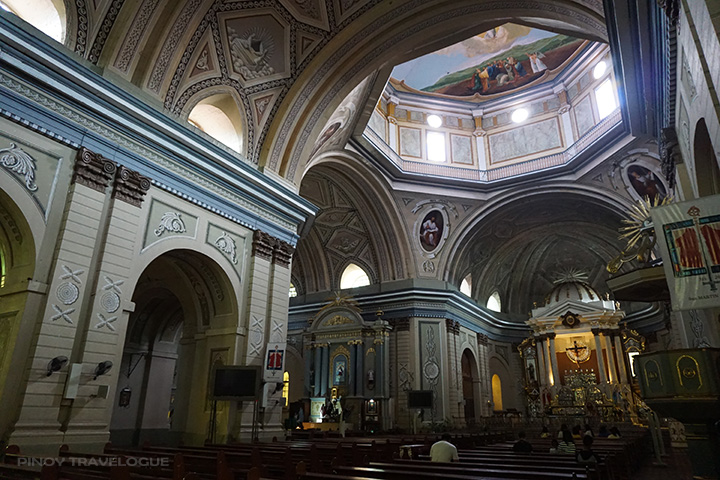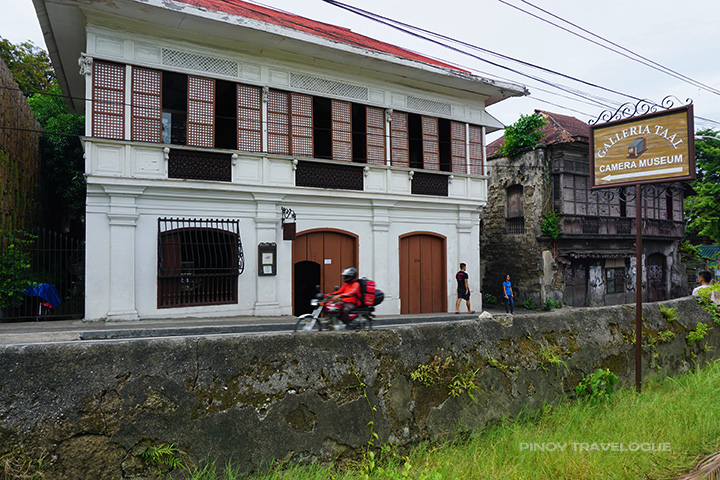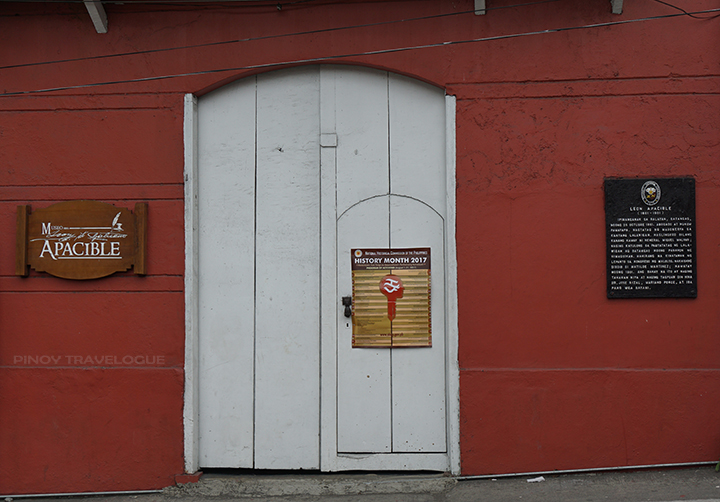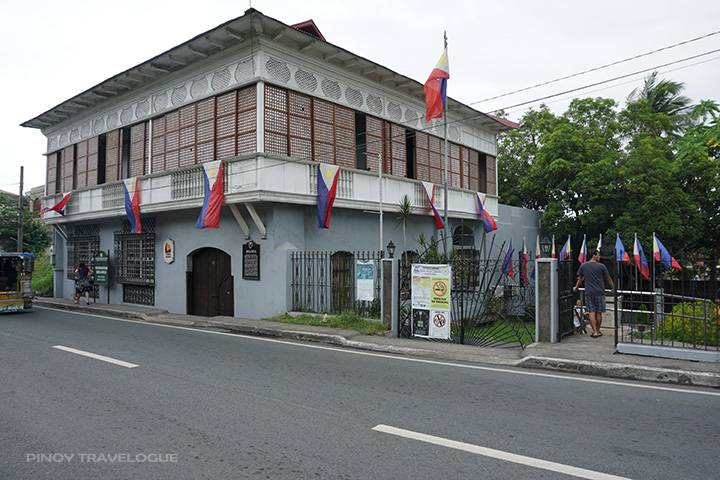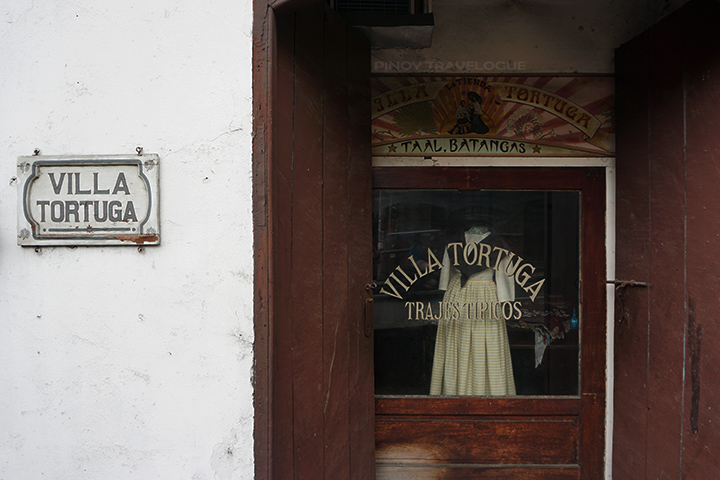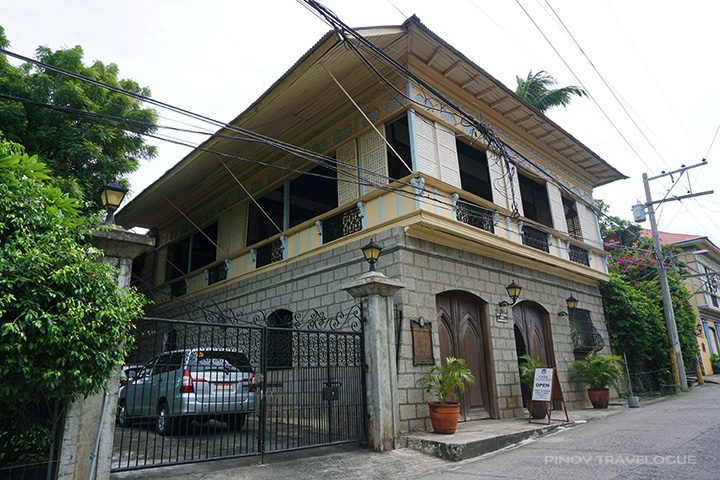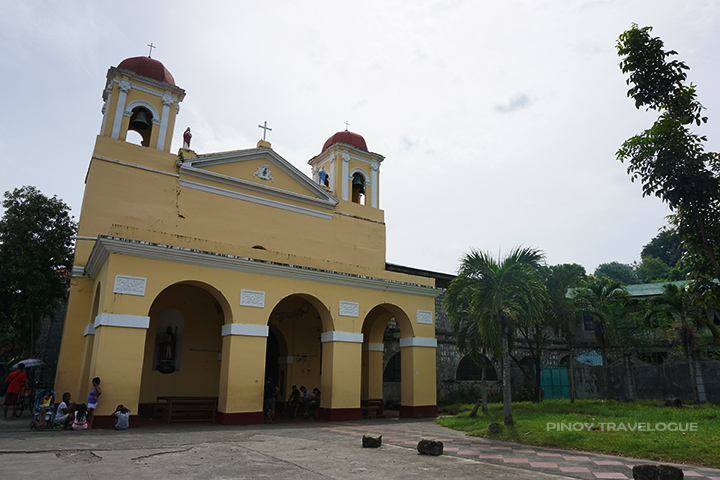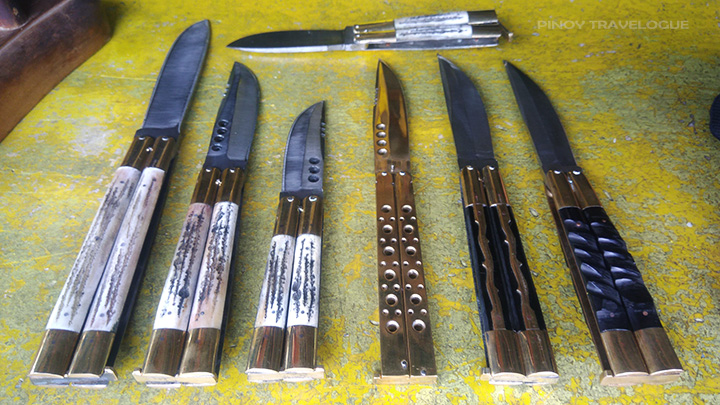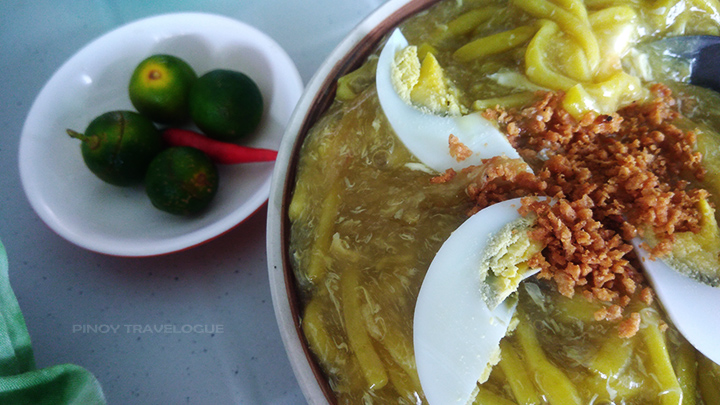Driving past the town center's welcoming arch is entering a portal into the Spanish-ruled Philippines, perhaps sometime between the 16th and 19th centuries, when houses of style now regarded as a heritage line the sleepy streets navigated not by cars but by horse-drawn carriages.
"Taal", associated more often with the active volcanic island situated amidst the eponymous lake in Batangas, is also name to the unassuming town that friars of Augustinian order founded in 1572. History recounts Taal's glorious days — the era when the present municipalities of Lemery, San Luis, Agoncillo, San Nicolas and Sta. Teresita were still part of the now small town. In 1752, the then large district was Batangas' economic center and seat of government, thus the province's namesake — Batangas province is erstwhile Taal province.
RELATED TRAVEL GUIDE: Quick Guide: Trekking Taal Volcano Island, Batangas
But Taal Volcano's catastrophic activity became a factor to the town's fate; the provincial capital transferred to the now Batangas City and the province was renamed so after the former's 1754 eruption. The eventual creation of adjacent municipalities further downsized Taal and turned it into a quiet yet charming town as it is now.
What has left as a reminder to the town's distant past — and serves as the present generation's window to the country's Spanish colonial period — was the town's poblacion (town center) that the National Historical Commission of the Philippines (NHCP) declared as a historical landmark. Rustic churches, ancestral bahay-na-bato (Spanish-Filipino stone houses) and museums in honor of notable Taaleño patriots forms the quaint Taal Heritage Town.
Perhaps the most popular landmark, the biggest Catholic church in Asia stands like a crowning jewel of the heritage town. Get overwhelmed by the church's huge, rustic interiors notably its high, intricate ceilings. You might want to climb up the belfry and get a vista of the entire town and nearby waters and see Taal Basilica's large, century-old bell up close.
Just outside the church patio is the town square where locals spend a lazy walk while tourists take photos of them with the life-size "TAAL" letter standees. Nearby, there's Escuela Pia that now serves as Taal Cultural Center building; the former convent and school for underprivileged youth is considered one of the country's oldest educational institution.
Across the street stands Casa Real that houses Taal's municipal government. The marker plastered on its façade briefly narrates the town's distant past. The church (Taal Basilica) and the town hall (Casa Real) faces each other at the heart of the town center — a common townscape during the Spanish period.
TIPS: Make Taal Basilica the starting point of your walking tour if you drive your way to Taal. The church's and Casa Real's compounds have adequate parking lots — just make sure it's not a Sunday when it may get crowded and looking for parking space may get challenging. Visit Taal's tourism office and ask for a map for an easy-peasy stroll.
From the Basilica, stroll along Calle M. M. Agoncillo and you'll find a number of ancestral houses-turned-museums that are worth visiting. One is the unique Galleria Taal (Ilagan-Barrion Ancestral House) that holds a gallery of historic photographs and over a hundred pieces of vintage and classic digital camera collection. The country's first camera museum gives a walk-through on how cameras and the world of photography evolved through time.
READ ALSO: Galleria Taal Camera Museum: Home to Memories and Those Meant to Capture Them
Entrance fee: PHP 100
Opens: Tue-Sun, 8 a.m-5 p.m.; opens Monday if it falls on a holiday
Contact: (+63) 09067632449 / Galleria Taal
TIP: Savor a cup of kapeng barako or tablea tsokolate at the museum's backyard café.
Just across Galleria Taal stands the house of Leon Apacible, a lawyer known as the right-hand man of another Batangueño revolutionary leader Gen. Miguel Malvar. Don Leon's house, then a meeting venue for the Masonic association he formed in Batangas, now houses his and his brother Galicano's memorabilia as well as their family's elegant furniture collection. Leon Apacible Museum is administered by NHCP.
Opens: Tue-Sun, 8 a.m-5 p.m.
Contact: (+63) 09178521652 / museonileonapacible@gmail.com
TIPS: Museums under NHCP located around the Philippines are closed every Monday. They do not collect entrance fees as well (Filipino taxpayer's money funds its upkeep, and it should be). NHCP museums in Taal Heritage Town include that of Leon Apacible and Marcela Agoncillo.
Ancestral house of Marcela Mariño-Agoncillo, the chief seamstress of the Philippine flag, and her husband Felipe, regarded as the first Filipino diplomat who delegated in the negotiation that led to the famed Treaty of Paris — freeing the Philippines from Spanish rule in 1898. The museum has seven galleries featuring the life and career of the couple, and Marcela's historic contribution — the present Philippine flag.
READ ALSO: Fascinating Stuff Inside Emilio Aguinaldo's Mansion
Opens: Tue-Sun, 8 a.m-5 p.m.
Contact: (+63) 09176564170 / museoninaagoncillo@gmail.com
Gift shop and photo studio that houses a collection of Spanish period costumes. Bring your ultimate throwback trip to the next level — dress up and star in a photo shoot featuring any of those colonial get-up, and take home a sepia copy of your Ilustrado-inspired photograph.
Entrance Fee: PHP 50
Costume rental (for photo shoot): PHP 250 per costume
Opens: Tue-Sun, 8 a.m-5 p.m.
Contact: (+63) 09279751683 / Villa Tortuga
Casa Gahol holds an art gallery featuring the works of different artists and a cozy café facing the Pansipit riverbanks. Also known as Galleria Orlina, the ancestral house's owner was Ramon Orlina, an internationally acclaimed Filipino glass sculptor. Ever heard of Museo Orlina in Tagaytay? Glass art pieces exhibited there are also his. *Closed during our visit, it was a non-working Monday (holiday).
Casa V, as it was fondly called, seemed the grandest bahay-na-bato in town. It displays the apparently affluent life of Gliceria and husband Eulalio Villavicencio, both hailed for their moral and material support to the revolutionaries in 1896. Beside their familial home was the Villavicencio Wedding Gift House, so-called as it was Eulalio's wedding gift to Gliceria, that now accommodates tourists for a laid-back overnight stay.
Opens: Fri-Sun, 8 a.m-5 p.m.; opens other days for special arrangements only
Contact: (+63) 09178970363 / Villavicencio Wedding Gift House
Alongside Taal Basilica, another highly regarded church in Taal was the far smaller church at Brgy. Caysasay which is home to the supposedly miraculous Marian image a fisherman fished out at the nearby Pansipit River in 1603.
One of the historic events involving the venerated image occurred in the 17th century at a natural spring where two wood gatherers found the image levitating on top of a tree after it has been lost for years. The waters springing to that exact spot, now known as Saint Lucia's Well, possess miraculous healing powers according to locals and pilgrims.
Saint Lucia's Well is tucked in a jungle, at the backyards of houses that line the so-called San Lorenzo Ruiz Steps. The 125-step concrete staircase named after the first Filipino Catholic saint is a landmark that connects Caysasay Shrine to Taal's town center.
READ ALSO: Caysasay Shrine, Saint Lucia's Well and Why We Consider Revisiting Taal Heritage Town
Perhaps the last stop of your walking tour before leaving the town (or the first as it stands just past Taal Heritage Town's welcoming arch). At the garden of the stately white mansion stands a bronze statue of Felipe Agoncillo, Gregorio's uncle and Marcela Agoncillo's husband. The Agoncillos are one of the prominent names in Taal, Batangas.
Entrance fee: PHP 70
Opens: Fri-Sun, 8 a.m-5 p.m.
Drive: For driving directions, check this out!
Address: 32 Calle Gliceria Marella
Contact: (+63) 09178970363 / Villavicencio Wedding Gift House
Casa Punzalan
Address: Calle Camilo Ilagan
Contact: (043) 408 0084 / (+63) 09217600527
Rate: starts at PHP 600 per person
Paradores del Castillo
Address: 28 Calle H. del Castillo
Contact: (043) 740 4060 / Paradores del Castillo
Book here or here for discounts!
Villa Severina
Address: 55 Calle Vicente Ilustre
Contact: (+63) 09959913706 / Villa Severina
Rate: starts at PHP 2000 per person (with breakfast)
Or if you'll be looking for a refreshing night dip after the sweltering walking tour, stay at one of Lemery's beach resorts — known for its fine, black sandy shores.
Shops selling hand-embroidered barong and traje de boda (wedding dress) abound at Taal Public Market. Outside the heritage village, roadside shops selling balisong (butterfly knives) and other blades stand side-by-side at Brgy. Balisong (take a jeepney from town center and alight at Brgy. Balisong).
READ ALSO: "Balisong" | Few Things ABout this Famous Knife from Taal, Batangas
READ ALSO: A Twist to Your Favorite Batangas Lomi at Lipa's Sizzling Lomi House
My ultimate tip for this trip: Spend the night in Taal so you can wallow at all the notable spots mentioned here (and other spots I failed to include). Trust me, you'll want to witness a spectacular view of Taal Basilica when illuminated by colorful neon lights at night.
"Taal", associated more often with the active volcanic island situated amidst the eponymous lake in Batangas, is also name to the unassuming town that friars of Augustinian order founded in 1572. History recounts Taal's glorious days — the era when the present municipalities of Lemery, San Luis, Agoncillo, San Nicolas and Sta. Teresita were still part of the now small town. In 1752, the then large district was Batangas' economic center and seat of government, thus the province's namesake — Batangas province is erstwhile Taal province.
RELATED TRAVEL GUIDE: Quick Guide: Trekking Taal Volcano Island, Batangas
But Taal Volcano's catastrophic activity became a factor to the town's fate; the provincial capital transferred to the now Batangas City and the province was renamed so after the former's 1754 eruption. The eventual creation of adjacent municipalities further downsized Taal and turned it into a quiet yet charming town as it is now.
What has left as a reminder to the town's distant past — and serves as the present generation's window to the country's Spanish colonial period — was the town's poblacion (town center) that the National Historical Commission of the Philippines (NHCP) declared as a historical landmark. Rustic churches, ancestral bahay-na-bato (Spanish-Filipino stone houses) and museums in honor of notable Taaleño patriots forms the quaint Taal Heritage Town.
Taal Basilica, Escuela Pia, and Casa Real
Calle M. M. AgoncilloPerhaps the most popular landmark, the biggest Catholic church in Asia stands like a crowning jewel of the heritage town. Get overwhelmed by the church's huge, rustic interiors notably its high, intricate ceilings. You might want to climb up the belfry and get a vista of the entire town and nearby waters and see Taal Basilica's large, century-old bell up close.
Just outside the church patio is the town square where locals spend a lazy walk while tourists take photos of them with the life-size "TAAL" letter standees. Nearby, there's Escuela Pia that now serves as Taal Cultural Center building; the former convent and school for underprivileged youth is considered one of the country's oldest educational institution.
Across the street stands Casa Real that houses Taal's municipal government. The marker plastered on its façade briefly narrates the town's distant past. The church (Taal Basilica) and the town hall (Casa Real) faces each other at the heart of the town center — a common townscape during the Spanish period.
TIPS: Make Taal Basilica the starting point of your walking tour if you drive your way to Taal. The church's and Casa Real's compounds have adequate parking lots — just make sure it's not a Sunday when it may get crowded and looking for parking space may get challenging. Visit Taal's tourism office and ask for a map for an easy-peasy stroll.
Galleria Taal
Calle M. M. AgoncilloFrom the Basilica, stroll along Calle M. M. Agoncillo and you'll find a number of ancestral houses-turned-museums that are worth visiting. One is the unique Galleria Taal (Ilagan-Barrion Ancestral House) that holds a gallery of historic photographs and over a hundred pieces of vintage and classic digital camera collection. The country's first camera museum gives a walk-through on how cameras and the world of photography evolved through time.
READ ALSO: Galleria Taal Camera Museum: Home to Memories and Those Meant to Capture Them
Entrance fee: PHP 100
Opens: Tue-Sun, 8 a.m-5 p.m.; opens Monday if it falls on a holiday
Contact: (+63) 09067632449 / Galleria Taal
TIP: Savor a cup of kapeng barako or tablea tsokolate at the museum's backyard café.
Leon Apacible Museum
Calle M. M. AgoncilloJust across Galleria Taal stands the house of Leon Apacible, a lawyer known as the right-hand man of another Batangueño revolutionary leader Gen. Miguel Malvar. Don Leon's house, then a meeting venue for the Masonic association he formed in Batangas, now houses his and his brother Galicano's memorabilia as well as their family's elegant furniture collection. Leon Apacible Museum is administered by NHCP.
Opens: Tue-Sun, 8 a.m-5 p.m.
Contact: (+63) 09178521652 / museonileonapacible@gmail.com
TIPS: Museums under NHCP located around the Philippines are closed every Monday. They do not collect entrance fees as well (Filipino taxpayer's money funds its upkeep, and it should be). NHCP museums in Taal Heritage Town include that of Leon Apacible and Marcela Agoncillo.
Marcela Agoncillo Museum
Calle M. M. AgoncilloAncestral house of Marcela Mariño-Agoncillo, the chief seamstress of the Philippine flag, and her husband Felipe, regarded as the first Filipino diplomat who delegated in the negotiation that led to the famed Treaty of Paris — freeing the Philippines from Spanish rule in 1898. The museum has seven galleries featuring the life and career of the couple, and Marcela's historic contribution — the present Philippine flag.
READ ALSO: Fascinating Stuff Inside Emilio Aguinaldo's Mansion
Opens: Tue-Sun, 8 a.m-5 p.m.
Contact: (+63) 09176564170 / museoninaagoncillo@gmail.com
Villa Tortuga
Calle M. M. AgoncilloGift shop and photo studio that houses a collection of Spanish period costumes. Bring your ultimate throwback trip to the next level — dress up and star in a photo shoot featuring any of those colonial get-up, and take home a sepia copy of your Ilustrado-inspired photograph.
Entrance Fee: PHP 50
Costume rental (for photo shoot): PHP 250 per costume
Opens: Tue-Sun, 8 a.m-5 p.m.
Contact: (+63) 09279751683 / Villa Tortuga
Casa Gahol
Calle M. M. AgoncilloCasa Gahol holds an art gallery featuring the works of different artists and a cozy café facing the Pansipit riverbanks. Also known as Galleria Orlina, the ancestral house's owner was Ramon Orlina, an internationally acclaimed Filipino glass sculptor. Ever heard of Museo Orlina in Tagaytay? Glass art pieces exhibited there are also his. *Closed during our visit, it was a non-working Monday (holiday).
Casa Villavicencio
Calle G. Marella cor. Calle H. CastilloCasa V, as it was fondly called, seemed the grandest bahay-na-bato in town. It displays the apparently affluent life of Gliceria and husband Eulalio Villavicencio, both hailed for their moral and material support to the revolutionaries in 1896. Beside their familial home was the Villavicencio Wedding Gift House, so-called as it was Eulalio's wedding gift to Gliceria, that now accommodates tourists for a laid-back overnight stay.
Opens: Fri-Sun, 8 a.m-5 p.m.; opens other days for special arrangements only
Contact: (+63) 09178970363 / Villavicencio Wedding Gift House
Caysasay Church, San Lorenzo Ruiz Steps and Saint Lucia's Well
Brgy. CaysasayAlongside Taal Basilica, another highly regarded church in Taal was the far smaller church at Brgy. Caysasay which is home to the supposedly miraculous Marian image a fisherman fished out at the nearby Pansipit River in 1603.
One of the historic events involving the venerated image occurred in the 17th century at a natural spring where two wood gatherers found the image levitating on top of a tree after it has been lost for years. The waters springing to that exact spot, now known as Saint Lucia's Well, possess miraculous healing powers according to locals and pilgrims.
Saint Lucia's Well is tucked in a jungle, at the backyards of houses that line the so-called San Lorenzo Ruiz Steps. The 125-step concrete staircase named after the first Filipino Catholic saint is a landmark that connects Caysasay Shrine to Taal's town center.
READ ALSO: Caysasay Shrine, Saint Lucia's Well and Why We Consider Revisiting Taal Heritage Town
Don Gregorio Agoncillo Mansion
Batangas Provincial Rd.Perhaps the last stop of your walking tour before leaving the town (or the first as it stands just past Taal Heritage Town's welcoming arch). At the garden of the stately white mansion stands a bronze statue of Felipe Agoncillo, Gregorio's uncle and Marcela Agoncillo's husband. The Agoncillos are one of the prominent names in Taal, Batangas.
Entrance fee: PHP 70
Opens: Fri-Sun, 8 a.m-5 p.m.
From Metro Manila to Taal, Batangas
Commute: Take a bus bound for Lemery either in Cubao or Pasay (around PHP 200), then take a jeepney ride at Flying V gas station (Lemery) going to Taal Heritage Town (PHP 10).Drive: For driving directions, check this out!
Where to Stay
Villavicencio Wedding Gift HouseAddress: 32 Calle Gliceria Marella
Contact: (+63) 09178970363 / Villavicencio Wedding Gift House
Casa Punzalan
Address: Calle Camilo Ilagan
Contact: (043) 408 0084 / (+63) 09217600527
Rate: starts at PHP 600 per person
Paradores del Castillo
Address: 28 Calle H. del Castillo
Contact: (043) 740 4060 / Paradores del Castillo
Book here or here for discounts!
Villa Severina
Address: 55 Calle Vicente Ilustre
Contact: (+63) 09959913706 / Villa Severina
Rate: starts at PHP 2000 per person (with breakfast)
Or if you'll be looking for a refreshing night dip after the sweltering walking tour, stay at one of Lemery's beach resorts — known for its fine, black sandy shores.
What to Bring Home
The Balisong and Barong Tagalog Capital of the Philippines, the sleepy town's moniker etched at the poblacion's welcoming arch. So what else to bring home other than the traditional Batangas knife and the country's national costume that's made of indigenous fibers?Shops selling hand-embroidered barong and traje de boda (wedding dress) abound at Taal Public Market. Outside the heritage village, roadside shops selling balisong (butterfly knives) and other blades stand side-by-side at Brgy. Balisong (take a jeepney from town center and alight at Brgy. Balisong).
READ ALSO: "Balisong" | Few Things ABout this Famous Knife from Taal, Batangas
Get a Taste of Taal
Though most structures in town are ancestral bahay-na-bato, there are few modern themed café as well. But for an authentic taste, savor a bowl of Batangas lomi in smaller diners around the vicinity. Some bed and breakfast (B&Bs) in Taal also offer turn-of-the-century-inspired meals.READ ALSO: A Twist to Your Favorite Batangas Lomi at Lipa's Sizzling Lomi House
My ultimate tip for this trip: Spend the night in Taal so you can wallow at all the notable spots mentioned here (and other spots I failed to include). Trust me, you'll want to witness a spectacular view of Taal Basilica when illuminated by colorful neon lights at night.



